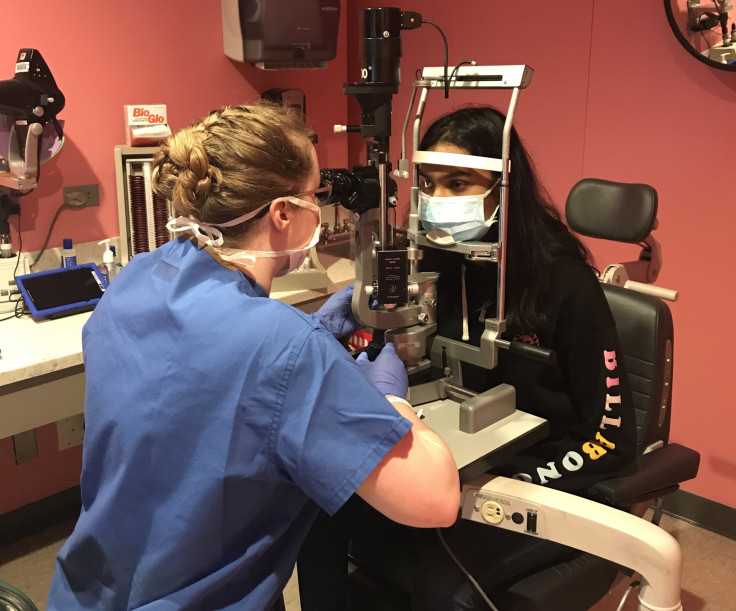Strained Eyes, Achy Heads: Side Effects of Remote Learning

With so many schools resorting to remote learning during the pandemic, some experts are warning that increased screen time paired with a lack of in-school eye exams should keep parents on the alert regarding their children's vision.
“Parents should definitely make sure their child’s eyes are getting evaluated so that if there is a problem, it can be addressed before it causes any learning difficulties,” said Kammi Gunton, MD, a pediatric ophthalmologist at Wills Eye Hospital in Philadelphia, Pa.
In the pre-Covid days, school nurses provided vision screenings. The parents of those youngsters who failed were told of the results. For example, of the 1,992 preschool through fifth graders who were tested in the New York City school district, about 1/3 had vision issues, and more older children than than those in prekindergarten were told they needed a comprehensive eye exam. At the time of the test, 8% of all children were wearing glasses.
That study was done 10 years ago. Studies conducted now of children's visual issues shows the rise in myopia, or the ability to see close but not far. A 2020 study found that 42% of youngsters in North America had myopic vision. The risk factors include inheriting the problem from parents, less time outdoors and more time in front of a screen. Unattended myopia can lead to glaucoma, retinal detachment and cataracts.
Most children who attend school via remote learning this year won’t receive these in-school eye exams.
But there are lucky ones. Some districts, like Williamsport, Pa., have set up clinics to provide local children with eye screenings during a time when many kids are attending school remotely.
The new schoolroom
Screens are built into the very fabric of remote learning. Students must rely on computers, electronic tablets and cell phones to attend classes and complete schoolwork.
“We’re all new to this degree of online learning, and there can be a little bit more eye strain when a child is working mostly at a computer,” Dr. Gunton said. “We need to be sure that we’re listening to our kids and watching their behaviors to see if we notice when they’re having trouble.”
But it likely won't be serious eye trouble. “There is no scientific evidence that online learning or being on the computer is going to harm the eyes,” Dr. Gunton said. What children might experience during remote schooling is eye strain, not eye damage, she said.
As to what to look for -- ff a child is blinking more often than usual, feeling fatigued, rubbing eyes or complaining of headaches, the child might be experiencing eye strain.
“And certainly, if a child says that the words are blurry on the computer screen or that they’re not able to complete their work because they can’t see well enough, those would be obvious red flags,” Dr. Gunton said.
Parents can help reduce eye strain in their children by adjusting the brightness of the screen so it’s comfortable to view, according to Dr. Gunton, and by making sure the child’s work station has good lighting — children should never be sitting in the dark at their computer.
Dr. Gunton said she doesn’t recommend blue light glasses, which work by filtering the blue light emitted by computer and phone screens. Blue light is brighter than other types of light and thought by some to disrupt sleep cycles and contribute to eye strain.
“Blue light glasses really haven’t been shown to be helpful or preventative of eye diseases,” she said. Instead, Dr. Gunton provides some of her patients with computer glasses.
“They are glasses that have a little bit of a magnification in them so that near distance viewing doesn’t require as much focusing demand from the kids,” she said. “For some kids, it really helps.”
Some of her other pediatric patients have experienced issues with the alignment of their pupils. Dr. Gunton said she adjusts those children’s glasses to help keep their eyes aligned when they’re on the computer.
“It’s very specific to particular needs, though,” she said. “It’s not for everyone.”
Dr. Gunton said parents should discuss their child’s specific situation with an eye care provider. Parents should see what free resources are available in their area, or make sure their child’s eyes are checked by their pediatrician or eye care provider.
“Don’t just go and do a routine eye exam if you’ve noticed any issues,” she said. “Really address the situation with them. Say, for example, ‘We’re on the computer for five hours a day. Here are some symptoms I’ve noticed. Are there things that would be specifically helpful for my child?’”



























